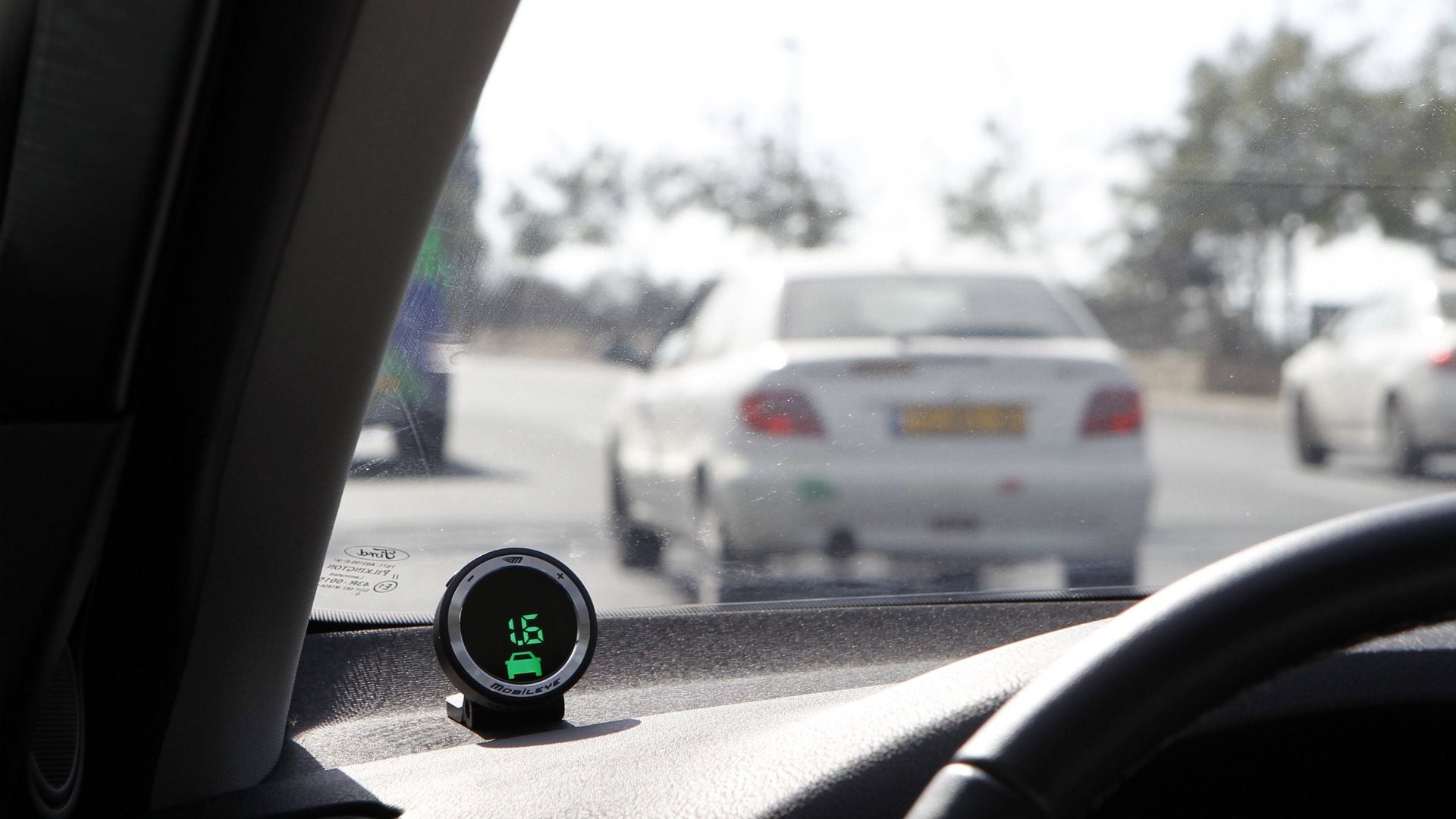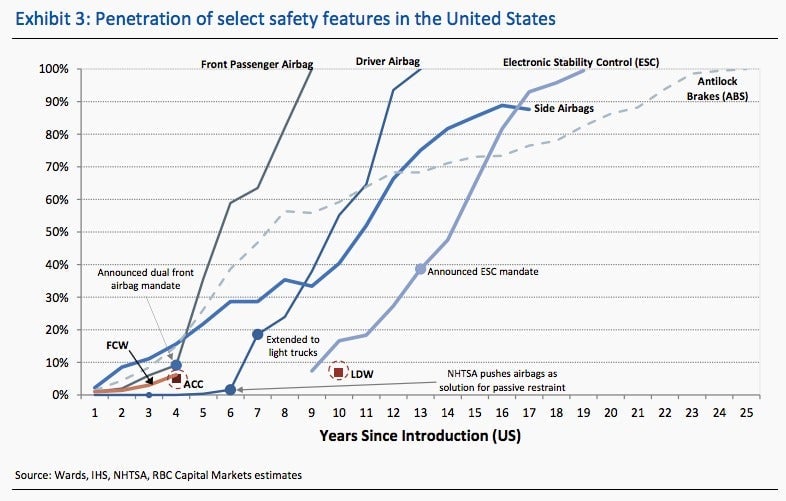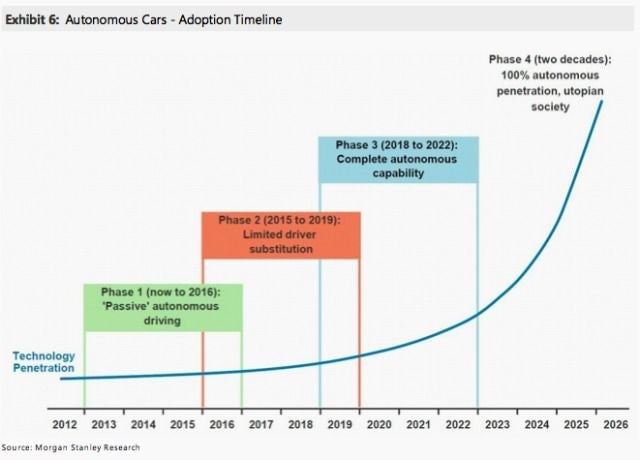The unstoppable march to self-driving cars is already underway
The prospect of cars that drive themselves taking over our streets tends to make people nervous. But the road to fully-autonomous cars is paved with semi-autonomous safety features. And who could be against technology that makes vehicles on the roads safer?


The prospect of cars that drive themselves taking over our streets tends to make people nervous. But the road to fully-autonomous cars is paved with semi-autonomous safety features. And who could be against technology that makes vehicles on the roads safer?
This chart from RBC Capital Markets shows the adoption of various driving safety features in the US:

As you can see, it took a little less than a decade for front passenger airbags, and a little more than a decade for driver airbags, to achieve full penetration in the US in new cars (aided by legislation that made them mandatory). Anti-lock brake systems (ABS) and electronic stability control (ESC) systems, followed a much slower adoption curve.
It remains to be seen how fast the industry will adopt the latest semi-autonomous safety features, such as adaptive cruise control (ACC), forward collision warning (FCW), and lane display warning (LDW) systems, which all use cameras and sensors to anticipate and prevent collisions.
RBC argues that consumers want semi-autonomous safety features and regulators (particularly in Europe) will increasingly demand them. By the end of the decade, RBC forecasts that 85% of vehicles being produced in Europe, 50% of cars in North America, and 20% of those in Asia will be fitted with at least one of these technologies.
This outlook is broadly consistent with Morgan Stanley’s extremely bullish prediction earlier this year, that a self-driving utopia will be here in a little more than a decade.

It’s worth noting that both investment banks are using these ideas to push the case for shares of Mobileye, a Jerusalem-based company whose software and microchips are used to power the aforementioned technologies in lots of cars already. That aside, it is still a tantalizing (or scary) prospect to think about.